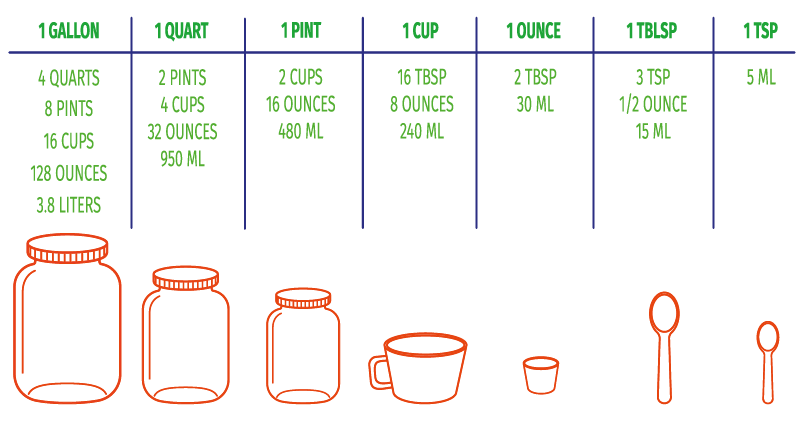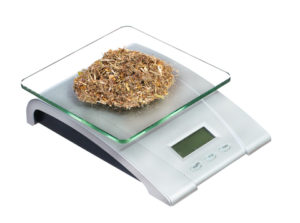All products sold to consumers, including soap and cosmetics, require the net contents to be placed on the label. In this post, we’re going to discuss how you measure the net contents and how it should be worded on the product label.
There are two different ways to measure products for sale – by volume and by weight.
Measuring by Volume
When a product is liquid (or at least pourable) it should be measured by volume. Products to be measured by volume include, for example, sprays, lotions, and perfume.

The units used for liquid products are by volume – how much space the product fills up. Volume measurements include:
- fluid ounce
- teaspoon
- tablespoon
- cup
- pint
- quart
- milliliter
- liter
- cubic centimeter
While all these are valid volume measurements, the only ones that should be used on a label are fluid ounce (fl oz) and milliliter (ml).
Most containers – jars, bottles, tubes, etc – are sold based on their volume, such as a 2 oz jar or an 8 oz bottle. In that case, the jar or bottle will hold that many fluid ounces.
On the Label
On the label, the contents should be stated as __ fl oz ( __ ml). For example: 4 fl oz (118 ml). Place it on the front of the container, in the bottom 1/3 of the label.
There are 29.5735 ml in one fluid ounce. When calculating the number of ml, don’t use decimal places; round down to the next whole number.
Measuring by Weight

When a product is solid or semi-solid, it should be measured by weight. Products to be measured by weight could include, for example, soap, massage oil, cream, whipped body butter or bath bombs. Weight measurements include:
- avoirdupois ounce (that’s an ounce by weight)
- pound
- gram
- kilogram
The correct measurements for a product label are only ounce (oz) and gram (g).
The oddity of ounces
While ounces by volume and ounces by weight are both called “ounces,” they only work out to be identical when measuring water. For water, 1 fluid ounce actually weighs one avoirdupois ounce; one cup (8 fluid ounces) of water really does weigh 8 ounces. But there it ends.
Most things weigh more or less than water – they sink or they float. Consider whipped egg whites: 2 cups of egg whites (16 oz by volume) doesn’t weigh as much as a pound of butter (16 oz by weight). When it comes to soap and cosmetics, some products weigh more ounces (by weight) than the number of ounces by volume. For example, an 8 oz jar (by volume) will normally hold 10 – 12 ounces (by weight) of salt or sugar scrub, but only 4 – 6 ounces of whipped body butter.
For solid or semi-solid products, it is important to actually weigh the amount of product that will fit in the container and put that amount in the net contents. You may be surprised!
On the Label
On the label, the contents should be stated as “Net weight __ oz ( __ g)”. You can also use “wt” instead of “weight”. For example: Net Weight 4 oz (113 g). Note that the words “Net Weight” or “net wt” are required on products labeled by weight. Place it on the front of the container, in the bottom 1/3 of the label.
There are 28.3495 grams in one avoirdupois ounce. When calculating, don’t use decimals; round down to the next whole number.
Why is it Important?
One of the most inspected, checked and important pieces of information on the label is the statement of the net contents. It tells the consumer how much of the product they are going to get.
By correctly stating the net contents you are correctly informing the consumer and they can make an educated decision about the value of the product.
Incorrectly stating the net contents not only could upset the consumer, it could also be considered “false and misleading” — something that government agencies and inspectors don’t like very much at all.

Shameless plug!
To really be able to create your own labels that comply with the regulations, get my book from Amazon and use it.
4th Edition – Released March 5, 2025!!!
Or order directly from me (and get a signed copy)!


Leave a Reply